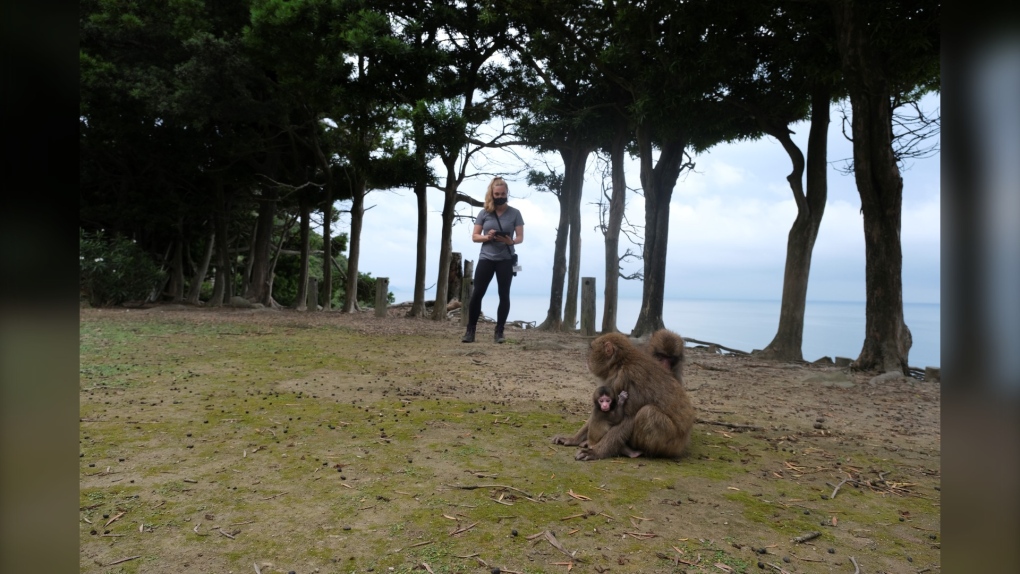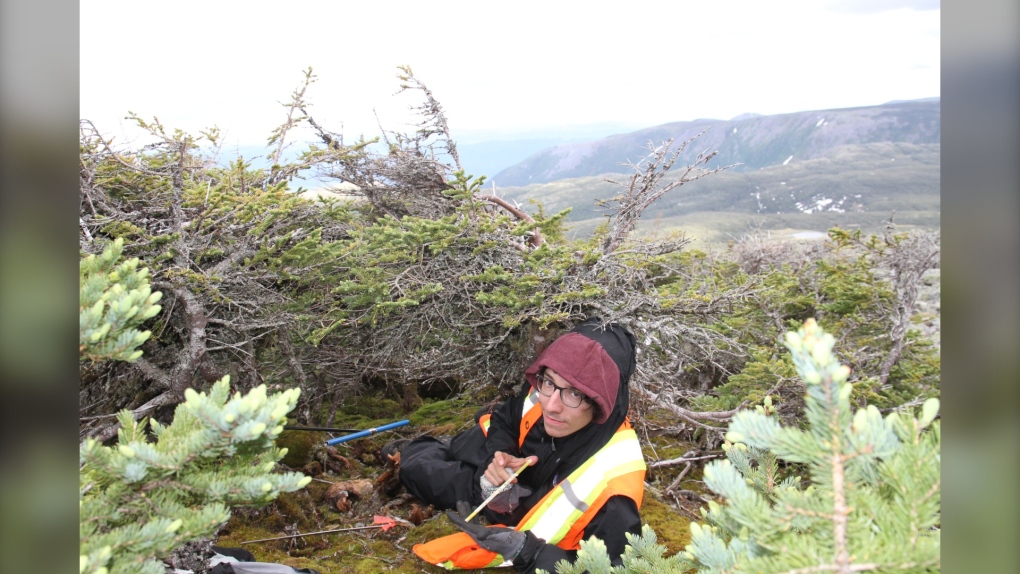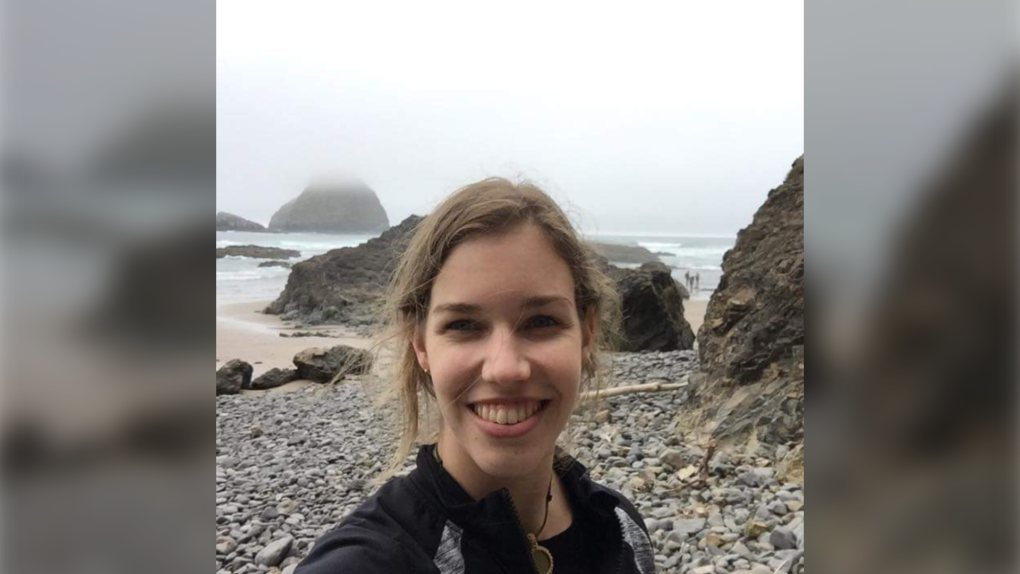Studying for a better future: Meet the Montreal students devoted to the climate cause
When Brogan Stewart started her undergrad in environmental science, she didn’t think she’d end up in Japan a few years later, hanging out with a group of monkeys.
But, as many students will discover, the ever-evolving world of environmental studies can take you far and wide.
Stewart, now a PhD student, is one of a growing number of pupils joining the field – and in doing so, tackling climate change and environmental destruction head-on.
As the COP15 biodiversity summit in Montreal winds to a close, CTV News is sharing the perspectives of four local students confronting the issue from the inside out.
And these students had a message for conference attendees: talk is cheap. It’s time for fast-moving, concrete solutions.
BROGAN STEWART, PRIMATE CONSERVATION
Stewart has always been passionate about nature and animals, but her fascination with monkeys came about rather unexpectedly.
“I just kind of, like, stumbled into primates,” she said. “My old supervisor, when I was studying climate, his wife is a primatologist. So I met her and then just fell in love with how intelligent and interesting primates are.”
 (Photo courtesy of Brogan Stewart)
(Photo courtesy of Brogan Stewart)
Since then, much of Stewart’s research has centred on monkeys and their vulnerability to warming temperatures and other environmental changes. She’s also studying the adaptability of disabled primates, observing how some can learn to climb trees without hands, for example.
It’s this aspect of her research – understanding the perseverance of animals – that gives Stewart hope for the future.
“Obviously, we’re in a biodiversity crisis right now. But I think that there is a positive light to it too, where many animals will be able to adapt and change with what's coming,” she said. “But we do need to limit emissions, and we need to limit warming as much as we can still, for all the other animals that might not be able to adapt.”
Born in Saskatchewan, Stewart moved to Montreal to pursue her studies at Concordia University.
There, she co-founded the Climate Emergency Committee, a group of undergrads, graduate students and professors that “come together to take action against the global emergency that is climate change,” according to the Concordia website.
The committee is behind a handful of sustainability projects, including tree planting at the university’s Loyola campus, implementing a “flying-less” policy for faculty in Concordia’s environment department, and creating an interactive “Climate Geopardy” game for high schools and junior colleges.
For Stewart, Climate Emergency was born out of a need for action – a need to do something, anything, to combat the crisis.
“It’s a way for us to feel better, in our own way,” she said. “Even though we’re a small group of individuals and can’t make any huge [societal] changes that need to happen, at least this way, we can slowly work towards something as a group.”
But for those who can make large societal changes – such as the delegates and decision-makers penning agreements at COP15 – Stewart has a plea:
“More action and less talk.”
In Stewart’s eye, the goals set at the United Nations conference should be explicit and achievable in the short term.
“When you set goals that are like, ‘Oh yeah, by 2050, we’re gonna do this’ – that’s just so far in the future that it doesn’t make it attainable.”
ALEX PACE, PALEOCLIMATOLOGY
To determine solutions for the future, it’s often helpful to look to the past – and the past isn’t always recorded in history books.
Sometimes, it’s recorded in nature.
It’s a lesson Alex Pace has carried from his undergrad all the way up to his PhD.
“I study environmental change using tree rings,” said Pace, a Concordia student and fellow member of the Climate Emergency Committee.
 (Photo courtesy of Alex Pace)
(Photo courtesy of Alex Pace)
Tree rings, he explained, are a type of “paleo proxy” – natural systems that record elements of their environment over time. Other examples include coral, ice sheets and sediment cores.
The stump of a tree contains a wealth of information about a given habitat, cataloguing everything from radioactivity to temperature to moisture. Researchers can then use this data to measure the rate of climate change and fill in gaps in the historical record.
“When are we going outside of the range of what that ecosystem has experienced over the last few hundred years?” Pace said. “When do we know that, okay, this system is actually being affected by [human-caused] climate change?”
Raised on Montreal’s South Shore, Pace has always been drawn to the natural world, seeking out “pockets” of flora and fauna within the sprawling suburbs.
“There’s this natural area near where I grew up in,” he recalled. “I would go there a lot. It was basically a sanctuary for a lot of birds and frogs and beavers.”
Protecting biodiversity in cities is crucial he said, and strategies to do so should be sustainable and community-based.
“We need more protected areas, but protected areas that are in collaboration with communities,” he said. “If people are connected to the area, and they depend on it, then it's sustainable in itself.”
MIGUEL EDUARDO FELISMINO, MICROPLASTICS RESEARCH
Miguel Eduardo Felismino didn’t think all that much about climate change growing up.
Born and raised in the Philippines, the issue wasn’t on his radar until his family moved to Canada.
“Living in a third-world country, you kind of have other priorities, for sure,” Felismino said. “With all of the privilege that we got coming here, it allowed me to, kind of, think of the bigger picture and be more concerned about climate and how we're treating the planet.”
That bigger picture would eventually grow to include microplastics: tiny, broken-down plastic particles that now permeate every corner of the natural world, from soil and water to human breastmilk.
 (Photo courtesy of Miguel Eduardo Felismino)
(Photo courtesy of Miguel Eduardo Felismino)
A Master’s student, Felismino has taken particular interest in how microplastics affect freshwater fish, observing their impact on growth and behaviour.
“If the world continues to trend [the way] we’re going, freshwater’s gonna be a much more important commodity, in the future. So protecting the way that our freshwater systems function and keeping it alive is going to be more of a priority,” he said.
The plastics infiltrating our environment come from all corners of human activity, he noted, including the laboratory.
The great irony of microplastic research is that it requires, well, plastics. New, fresh, virgin plastics made specifically for research purposes, often shipped in from faraway countries.
That’s why Felismino – alongside other students at the Concordia Precious Plastics Project (CP3) – is working to make these research-grade plastics in-house and out of recycled materials.
“[We’re] trying to make better research practices to reduce our carbon footprint,” he explained.
CP3 is still refining the process, but the hope is to eventually share its techniques with other universities.
Felismino is hopeful the world’s decision-makers listen carefully to the research as they finalize plans to protect biodiversity.
"I just want to see them take measurable action to see actual change," he said.
"I think as researchers and scientists, we kind of just hope that they listen to the things that we're saying. And I think [they've] had a pretty poor track record of doing that. So yeah, let's see. Maybe this one will be better."
JAIMEE PALMER, ENVIRONMENTAL ASSESSMENT
Jaimee Palmer is accustomed to the practice of packing up and going north – she did exactly that when she moved from Australia to Montreal a couple of years ago.
Her next adventure will take her even further.
As part of her master’s degree in environmental assessment, Palmer is preparing for an internship in Northern Quebec.
“It's helping to manage the land and the development projects that will be happening on the land, such as mines and extraction projects and roads and things, to reduce the environmental harm that's caused by those projects,” Palmer explained. “And to make sure that the communities that live up north get the maximum possible benefit from those projects.”
Environmental assessments are used to evaluate the potential ecological effects of a given project, keeping governments and corporations in check.
 (Photo courtesy of Jaimee Palmer)
(Photo courtesy of Jaimee Palmer)
For Palmer, who’s also a member of the Climate Emergency Committee, it’s a way to become directly involved in the process “where decisions are made.”
But keeping powerful entities accountable is something anyone can do, she stressed.
While governments have the power to make real, significant change, it’s up to individuals – especially priviledged indivuals – to put pressure on leaders and make their demands heard.
“We need to tell the government we care about the environment and will support stricter environmental laws. People can write letters, sign petitions when appropriate, and vote.”
Vote with their ballots as well as their dollars.
“Money talks. If we stop giving big businesses our money, they won’t be able to keep doing what they’re doing, and will need to improve their practices.”
Palmer also underscored the importance of uplifting Indigenous voices in conservation efforts.
“My team will be working with Indigenous communities that are up north. And I think Indigenous knowledge is going to be super important for the climate transitions that we're trying to make because they already know how to live sustainably on the land,” she said. “I hope we can start to implement it on a wider scale globally.”
The COP15 biodiversity summit runs from Dec. 7 to Dec. 19. Click here to learn more.
CTVNews.ca Top Stories

Can the Governor General do what Pierre Poilievre is asking? This expert says no
A historically difficult week for Prime Minister Justin Trudeau and his Liberal government ended with a renewed push from Conservative Leader Pierre Poilievre to topple this government – this time in the form a letter to the Governor General.
'I'm still thinking pinch me': lost puppy reunited with family after five years
After almost five years of searching and never giving up hope, the Tuffin family received the best Christmas gift they could have hoped for: being reunited with their long-lost puppy.
Wrongfully convicted N.B. man has mixed feelings since exoneration
Robert Mailman, 76, was exonerated on Jan. 4 of a 1983 murder for which he and his friend Walter Gillespie served lengthy prison terms.
Pickup truck driver killed by police after driving through Texas mall and injuring 5
A pickup truck driver fleeing police careened through the doors of a JCPenney store in Texas and continued through a busy mall, injuring five people before he was fatally shot by officers, authorities said.
Unifor members ratify new agreement with Canadian National Railway
Unifor said on Sunday that its members at Canadian National Railway (CN Rail) have ratified a new four-year collective agreement, averting a potential strike action.
6 adults, 4 children taken to hospital following suspected carbon monoxide exposure in Vanier
The Ottawa Paramedic Service says ten people were taken to hospital, one of them in life-threatening condition, following an incident of suspected carbon monoxide exposure Sunday morning in the neighbourhood of Vanier.
Two U.S. Navy pilots shot down over Red Sea in apparent 'friendly fire' incident, U.S. military says
Two U.S. Navy pilots were shot down Sunday over the Red Sea in an apparent 'friendly fire' incident, the U.S military said, marking the most serious incident to threaten troops in over a year of America targeting Yemen's Houthi rebels.
Big splash: Halifax mermaid waves goodbye after 16 years
Halifax's Raina the Mermaid is closing her business after 16 years in the Maritimes.
Second body recovered from site of B.C. landslide
The second resident of a home that was destroyed by a landslide in Lions Bay, B.C., last weekend was found dead Saturday, officials confirmed.
































